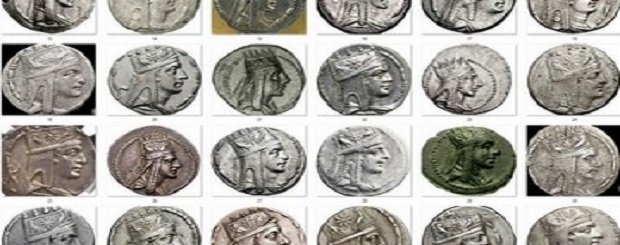
January 8, 2018 Vigen Avetisyan Culture, News
Tigran II the Great is referred to as the King of Kings in Armenian history. He is one of the most successful kings in history, though he is fairly unknown to western audiences. Tigran II subdued the entirety of Mesopotamia, conquered the Parthians, and challenged the world’s greatest power at the time, the Roman Empire. Tigran’s reached as far as Ecbatana.
Tigran II took the title of King of the Kings, which even the Parthian kings did not assume at the time, according to their coins. Many historians and writers, such as Plutarch, called him “Tigranes the Great”. Referring to Tigran’s success in the east, Cicero wrote that he “made the Republic of Rome tremble before the prowess of his arms”. [1]
According to Greek historian Strabo,
“When he acquired power, he recovered these (seventy) valleys, and devastated the country of the Parthians, the territory about Ninus (Nineveh), and that about Arbela. He subjected to his authority the Atropatenians, and the Goryaeans; by force of arms he obtained possession also of the rest of Mesopotamia and, after crossing the Euphrates, of Syria and Phoenicea.” [2]
In his Ancient History, Charles Rollin said:
“Tigranes, to whom Lucullus had sent an ambassador, though of no great power in the beginning of his reign, had enlarged it so much by a series of successes, of which there are few examples, that he was commonly surnamed “King of Kings.” After having overthrown and almost ruined the family of the kings, successors of the great Seleucus; after having very often humbled the pride of the Parthians, transported whole cities of Greeks into Media, conquered all Syria and Palestine, and given laws to the Arabians called Scenites, he reigned with an authority respected by all the princes of Asia. The people paid him honors after the manners of the East, even to adoration.” [3]
Under the rule of Tigran the Great, Armenia prospered and became the strongest state to the east of the Roman Republic. Moreover, he expanded Armenia to its greatest historic extent.
Maybe the most fascinating fact about Tigran’s biography is that he acceded to the throne of Armenia at the age of 45 after he had escaped bondage from the Parthians. In times when people rarely lived until their 60s, Tigran fought in a battle against Roman legions at the age of 75. He remained the king of Armenia until he died at the age of 85.
To say the least, Tigran the Great undoubtedly was a fascinating individual, although he is somewhat forgotten outside Armenia. Regarding his biography and reign, many accounts and artifacts have reached us, including coins minted in his honor.
Those coins consist of tetradrachms and copper coins featuring his portrait wearing a decorated Armenian tiara with ear-flaps. Interestingly, Tigran’s appearance survived mostly thanks to these coin depictions.
Some Armenian folk legends recount his facial features as follows:
“King Tigranes was a slender and handsome man with fair curly hair and a sincere look in his eyes. He lived humbly and during all manners of celebrations and feasts behaved in an exemplary fashion. He never gave in to excesses. He loved honest servants, conducted fair trials, never envied the best and never despised those below him. His care and protection were extended to all.” [4]
There is one problem with the coin images. Though they mostly feature Tigran’s certain distinctive features, the majority of the coins portray quite different faces. One could rationally assume that the most detailed coins focusing on Tigran’s face rather than his symbolic tiara would be the closest to his appearance, but we can never know for certain.

Peopleofar.com conducted an interesting experiment. They blended as many faces from the coins as possible, creating an average face. So here’s what images of 45 coins have been summed up to:


All in all, we observe Tigran’s eyes to be rather large. He has a prominent nose with an insignificant gap at the nasal bridge, and a strong chin. His mouth features thick lips and a slight overbite. These features are rather typical to Armenian faces.
Peopleofar.com also decided to blend the 3 most detailed coins and the average face they got from blending the above 45 coins. Here is what the overlay looks like:


This one is much clearer, although not so much different. Lastly, this is what his face would look like without the overlay of the 3rd detailed coin (the rest of the conditions remains the same):

by Peopleofar.com
allinnet.info/news/what-tigran-ii-the-great-looked-like/
